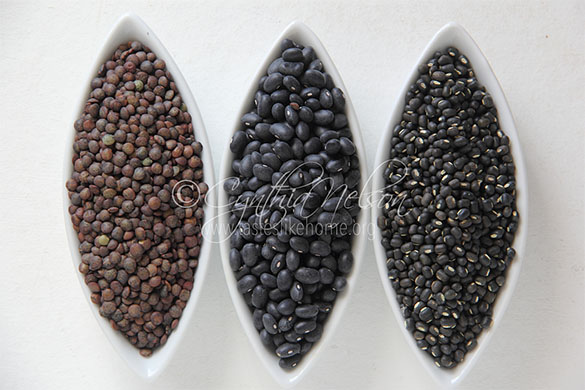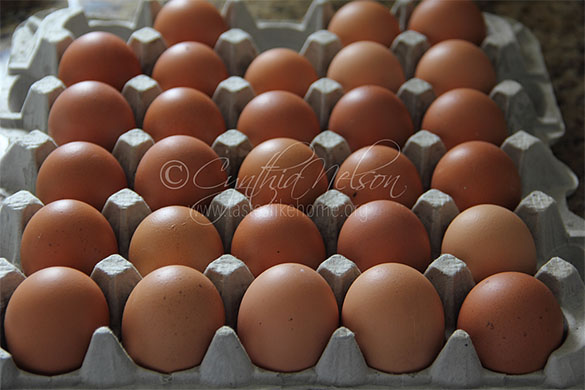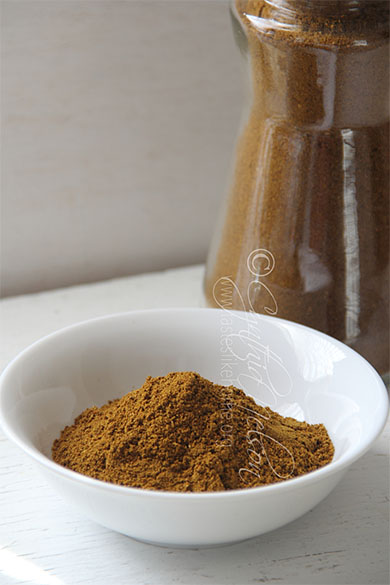
Room temperature is not a precisely defined term, it can vary anywhere from 68 degrees Fahrenheit to 77 degrees Fahrenheit. Here in the Caribbean, where the weather on average is a daily 80 degrees Fahrenheit and higher, this spells trouble particularly when it comes to storage and bringing cold or frozen things to room temperature. Goods and produce can perish quickly, fruits ripen rapidly, and it can cause things like butter and cheese to melt and turn to oil if not carefully monitored.

I began storing certain things in the refrigerator when I noticed that my flour, within two to three weeks of purchase, would start to get weevils or have a bad smell; peas would begin to change colour and fade; potatoes would become wrinkled; baking powder would clump up and harden, making measuring difficult; pasta would start to breakdown, milk when poured from the carton or can would have a deeper colour, almost cream like. Now, I am the kind of person who checks for expiry dates so imagine my shock when I’d see the marked difference in these products weeks later. I also follow storage instructions and while many things called for dark places and room temperature, with which I complied, the stuff was still going off. My friends were complaining about the same thing and then it hit me. Room temperature! That’s the key storage factor that we have not been taking into consideration; all the time we were thinking that room temperature just meant to leave it in the cupboards, pantry or shelves stored in paper or plastic bags and containers. Big mistake!

Room temperature is a term used often in the preparation and cooking of certain foods, but what exactly does it mean? A definition familiarly used is that room temperature refers to the general level of comfort in a room in which people live. While this definition is true, what also is a fact is that this level of comfort varies, depending on the individual and various other factors such as geographical location. Therein lies the rub when we are instructed to store and bring something to room temperature. Your level of room comfort may not be my level of room comfort.
If you can, cast your mind back to the supermarket where you shop. As soon as you walk in, you should notice that the temperature is cooler, that alone assists in the proper storage of the goods and produce stocked on the shelves. Can you remember where the long-life-shelf milk is stored? The flour? What about the nuts? They are all strategically located within the environs of the refrigerator and freezer sections as they feed off of the extra coolness that emanates from these cooling devices. When we make our purchases and bring them home, we alter the storage temperature and if the goods are not used in a timely manner, their appearance and structure can change.
Take red wine for example, it should be stored at a temperature of 55 to 65 degrees Fahrenheit, and a rule of thumb is that it is better to keep the wine over-chilled rather than over heated. Well, after a few ghastly experiences of ordering red wine when dining out here in the Caribbean, only to have the wines taste like something that’s best suited for vinaigrette, I’ve decided to only have red wine at home within hours of purchasing it from a place that stores them under the right conditions.
A few things to note about room temperature ingredients: when a recipe calls for room temperature butter, it means that the butter should be between 65 – 70 degrees F; you should be able to easily bend a log of the butter. So be sure to not let your butter get too soft unless the recipe specifically calls for softened butter.
Eggs stored in the refrigerator should be taken out at least 20 minutes before for use in a recipe that asks for room temperature eggs (this time is specific to the Caribbean).
Milk stored in the coldest part of the refrigerator should be brought up to room temperature by gently warming it on the stove as opposed to leaving it on your countertop. This is one of those cases, where, if you live someplace that enjoys cold weather, and depending on the temperature in your home, you can let the milk wear off its chill on your countertop given that you will be using it shortly.
It is useful to know your refrigerator, for example which section is the coldest, as this will be useful when it comes to storing your foodstuff. The top shelf is said to be the coldest followed by the second shelf and so on. Try as much as you can to store items in their designated compartments. That way, you’ll have more room for all the extra things you now have to store in the refrigerator in order to preserve their freshness and wholesomeness.
Cynthia






